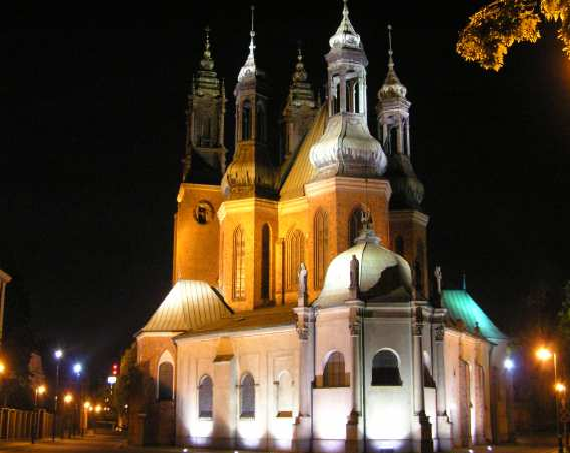Title of Product:
The architectural horizons in Poland get open for cathedral forms
Country:
 Poland
Poland
Century: 1000 - The 11th Century
Topic: The Roman Style
Image of the product:

Name of Author(s): Net periodic “sciaga.pl/tekst”
Name of Producer: Net periodic “sciaga.pl/tekst”
Language/s of Product: Polish
Target Group: General audience
Overall Evaluation: excellent
Availability of community:
Newsgroup
Objectives & Structure:
Aspects to consider:
- The Polish architecture’s horizons in its very beginnings
- Ability to analyze the architectural inner heritage
- Architectural forms, architectural preference and notions
- Visualising lecture by help of the pictures, designs, indicating sacral structures and the inner sacral language and communication via architecture
Description of contents:
In Poland the Roman Style is the oldest kind of architecture existing. It is connected with the initial phase of our state’s foundation, this which it is featured by rather crude and simplified form- usually we come cross small churches of one space covered with the hooked roof, with straightly closed presbytery. The Roman Style Architecture in Poland was arising under the German and Czech influences. The beginning of Roman Art’s development took place after the monarchy’s restitution by the King Kazimierz Odnowiciel (1038-1058). In XI century, there were founded still remaining to a small degree cathedrals: in Poznan, the second cathedral in Gniezno and the second cathedral in Cracow featured b two parted chorus place, the churches of Benedictines in Tyniec and Mogilno, the St. Andrew’s Collegiate in Cracow.
Evaluation and Comments:
Overall Evaluation: excellent
Clarity of structure, logical sequence of contents: excellent
Usability / easiness of navigation: excellent
The website is interesting / stimulating: excellent
Educational and learning value: excellent
Quality and relevancy of content: excellent
Compatibility of the content with the target group: excellent
Suitability and quality of graphic interface: excellent
Degree and quality of interaction: excellent
Exploitation of the electronic potential: excellent
Availability and quality of simulation exercises: excellent
Quality of the evaluation tools: excellent
Description of how the website can be used with the students::
The website makes the students’ observations much deeper than in the language of the theory, they can associate the symbols and allegories of the sacral motives into the architectural and artistic vision pretty fluently.
Comments::
The group adapts the vision of the architecture of that period to their own expectations and background consciousness as regards the attributive notion of the epoch.
Evaluation Date: 01.09.2008
Name of teacher: Michał Seroczyński
Name of School: Centre of Continuing Education in Sopot
Country: Poland
Subjects Taught: Fine Arts
Comments about this product

 Poland
Poland